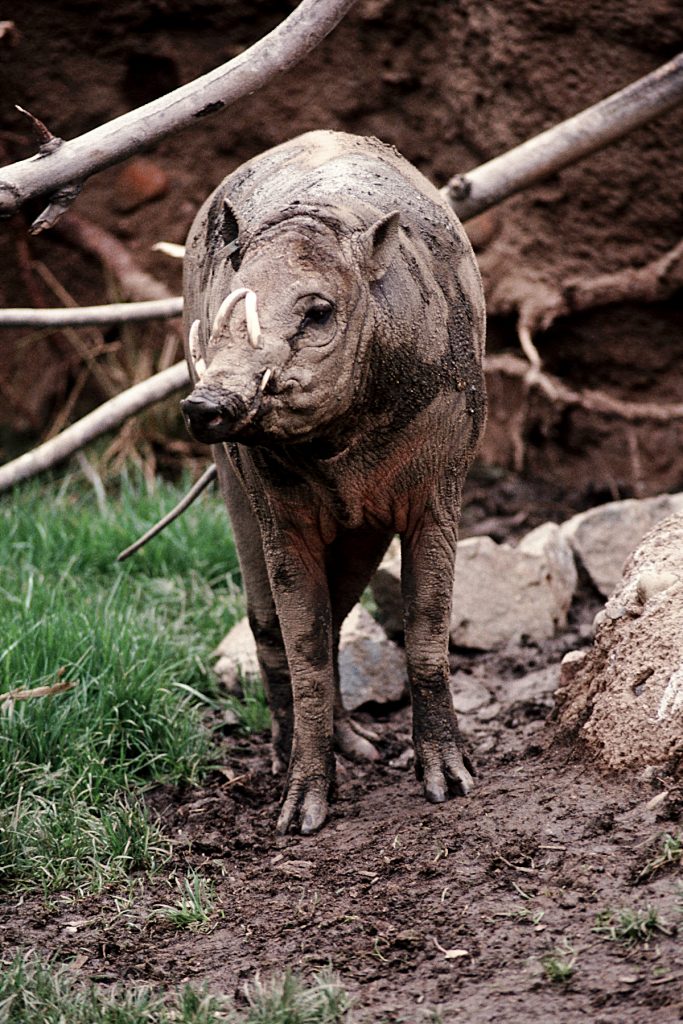Babirusas will eat almost everything. These omnivorous pigs consume leaves, fruits, berries, nuts, mushrooms, bark, insects, fish, and small mammals (even smaller babirusas!). They use their specialized hooves to dig for insect larvae and roots in the ground and can also stand on their two hind legs and forage on leaves high in the trees—very similar to a gerenuk in Africa.
In the wild, males tend to live in solitary or in bachelor herds of two to three males, while females can be found in groups of up to eight individuals with young. They spend the majority of the day roaming and foraging throughout the forest.

Little is known about this shy, forest-dwelling pig’s habits in the wild. Based on observation of captive animals, the babirusa appears to be mostly diurnal—active during the day and sleeping at night. When not foraging, they may wallow in the mud or just lie down and rest during the heat of the day.
Mating season occurs from January to August; fights between rival males precede mating. Gestation in females lasts 155 to 158 days and ends with one or two piglets (which is a small litter for pigs) and they lack stripes on their skin. This reduced litter size and lack of camouflage is often attributed to the babirusa’s predator-free environment. Piglets nurse for the first six to eight months of life.















